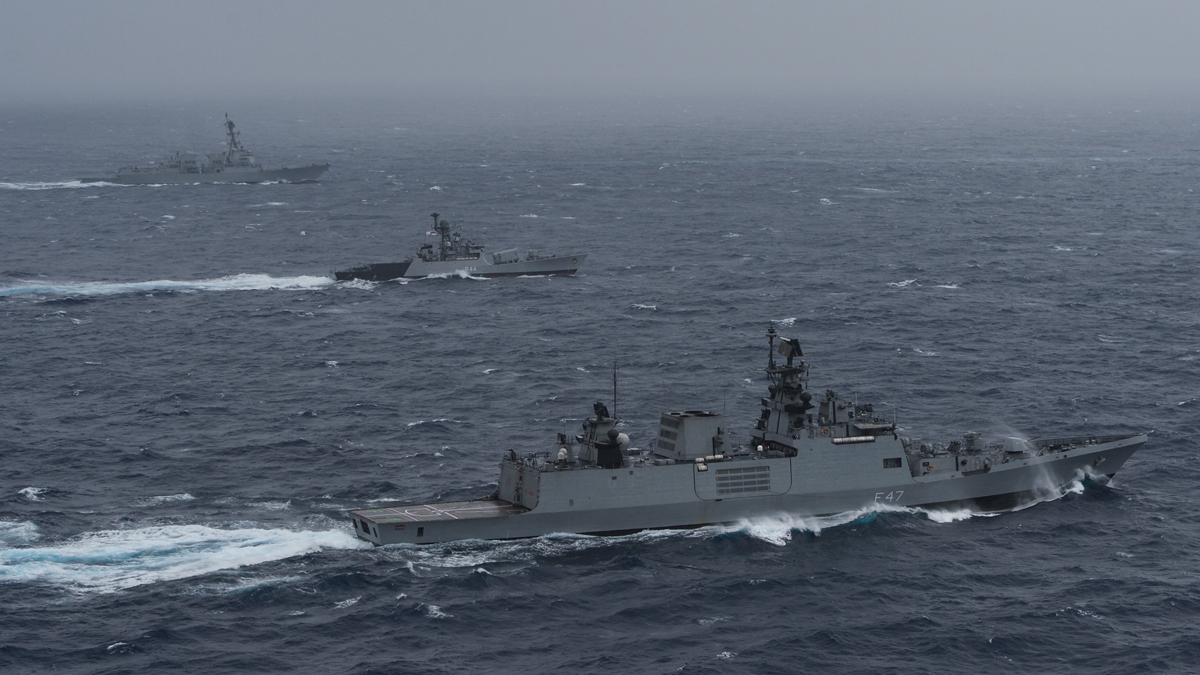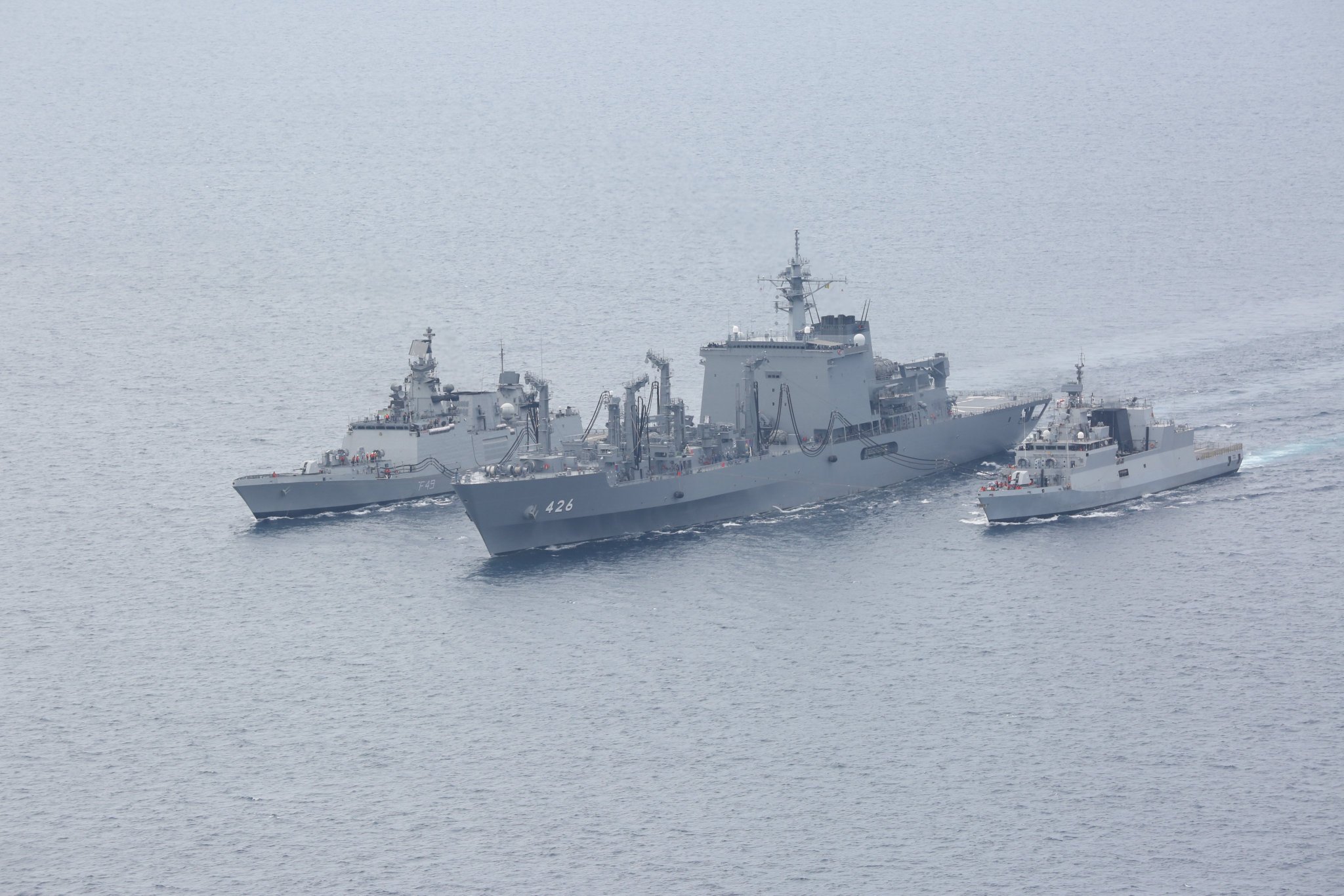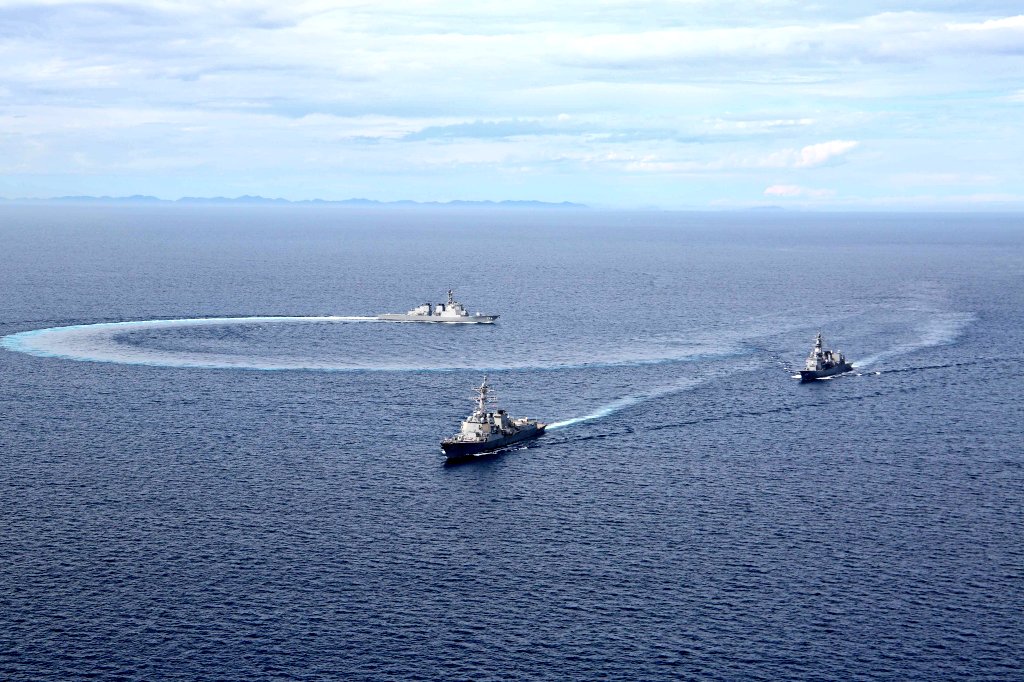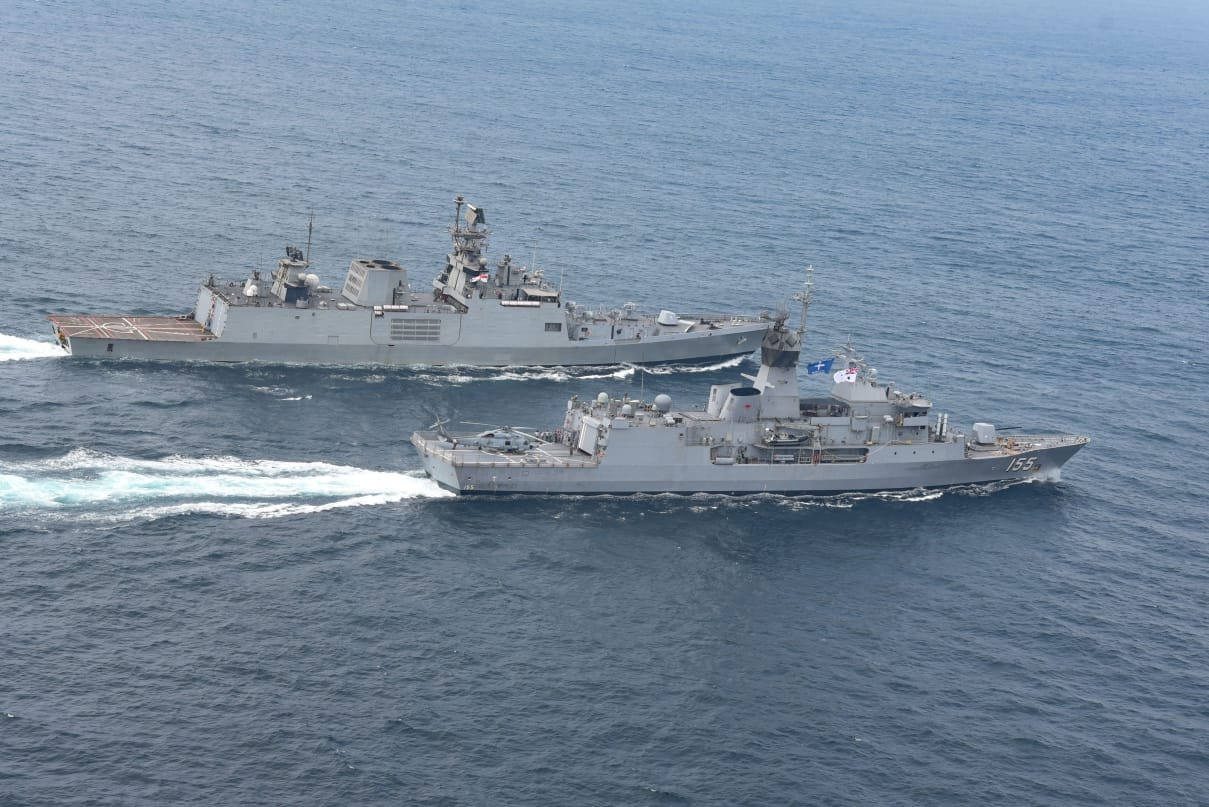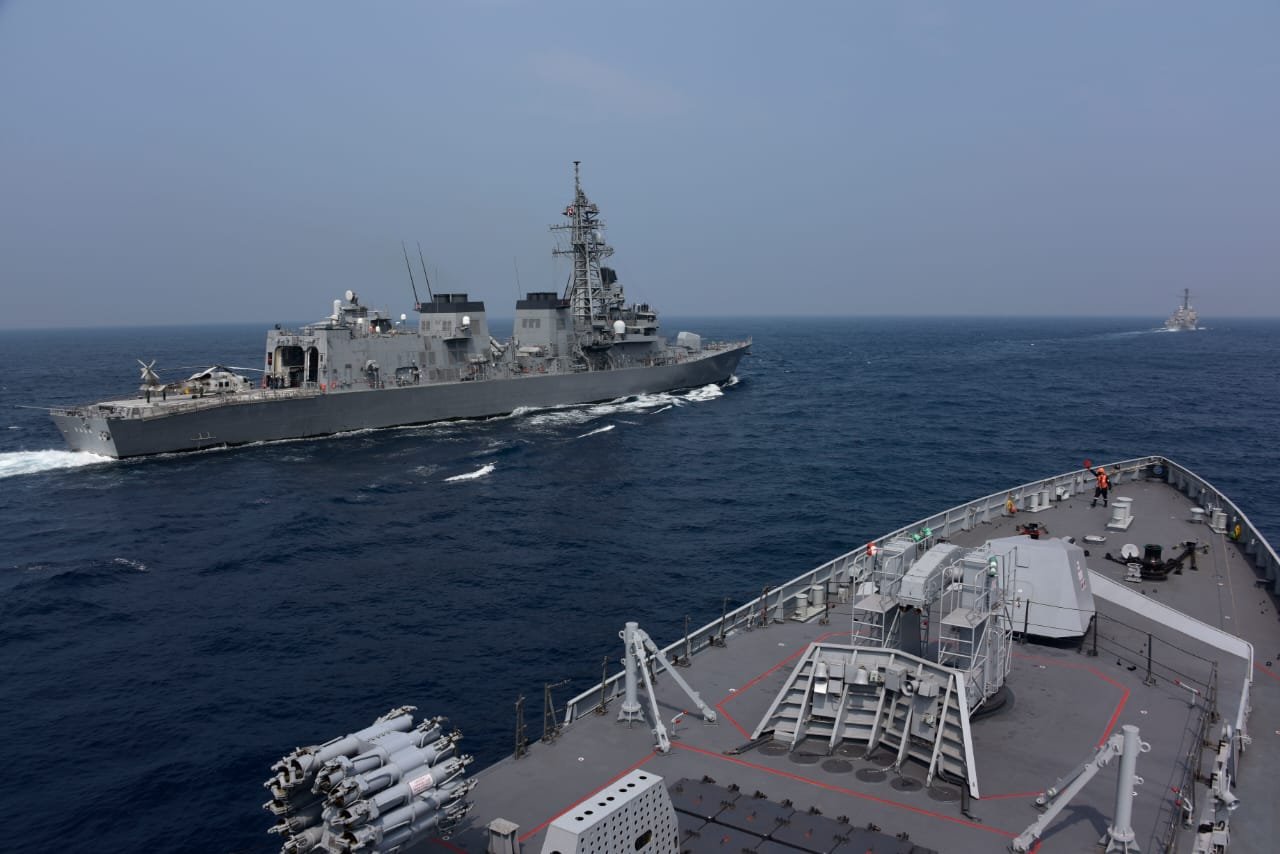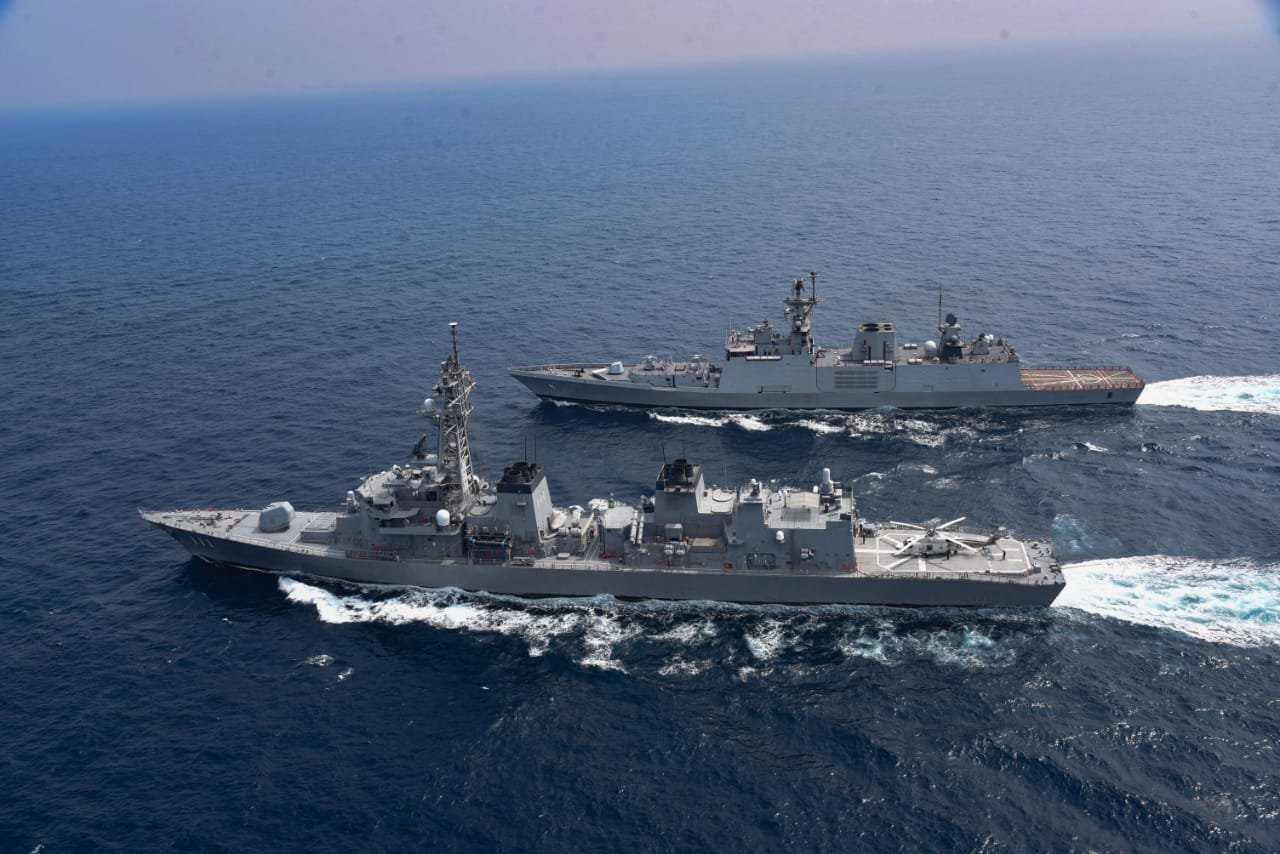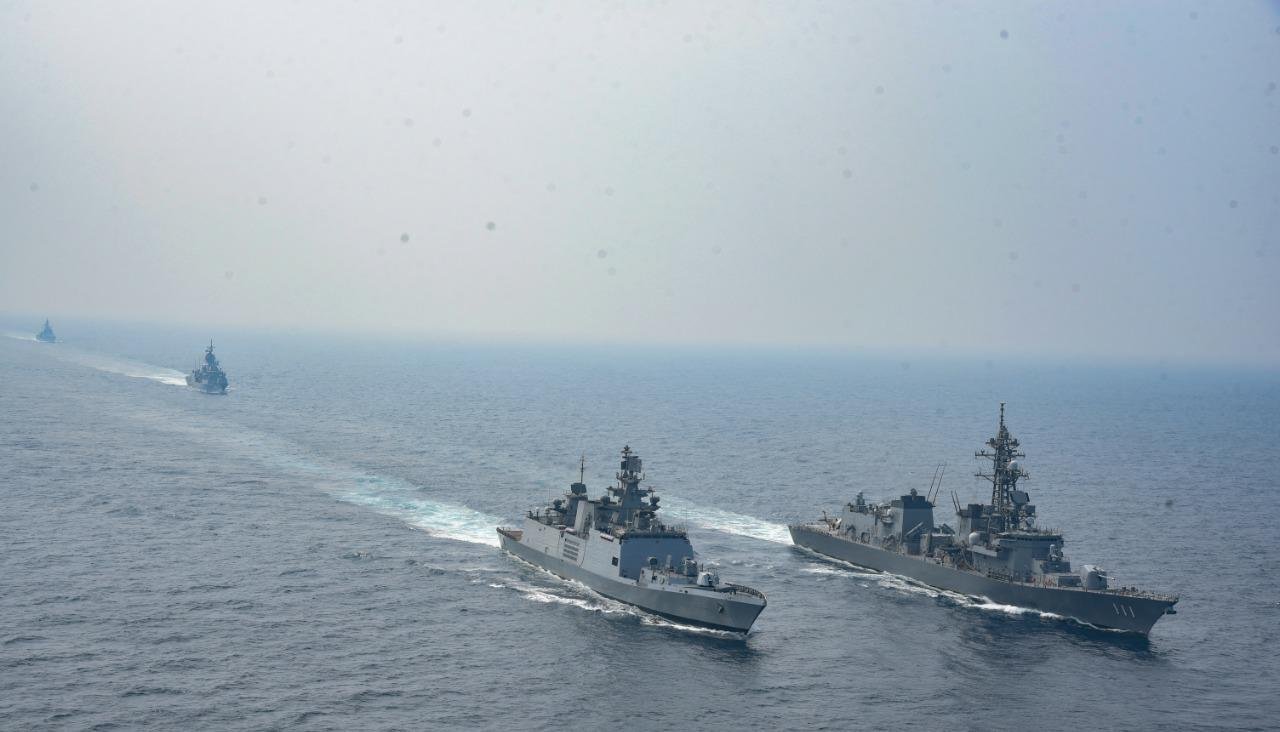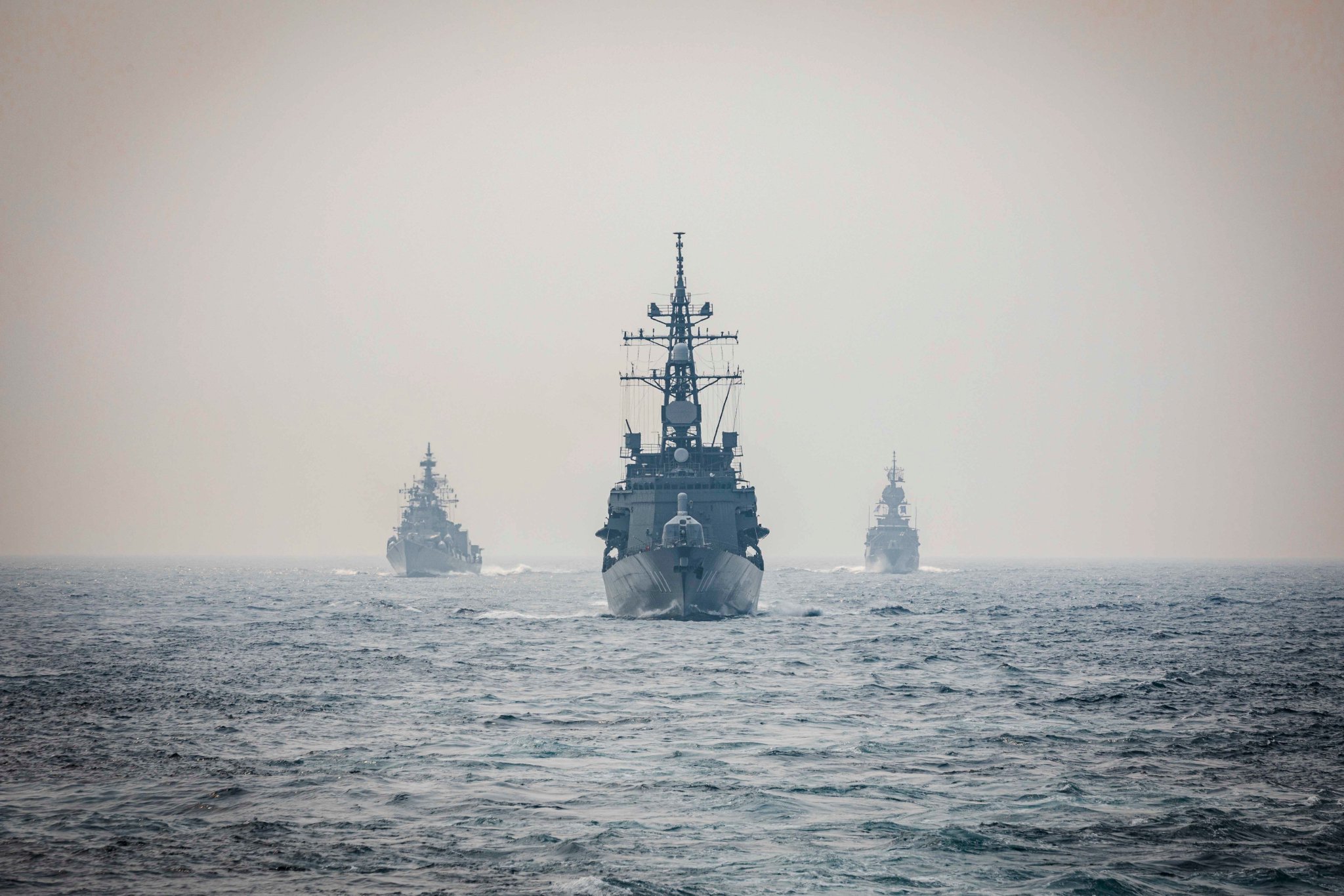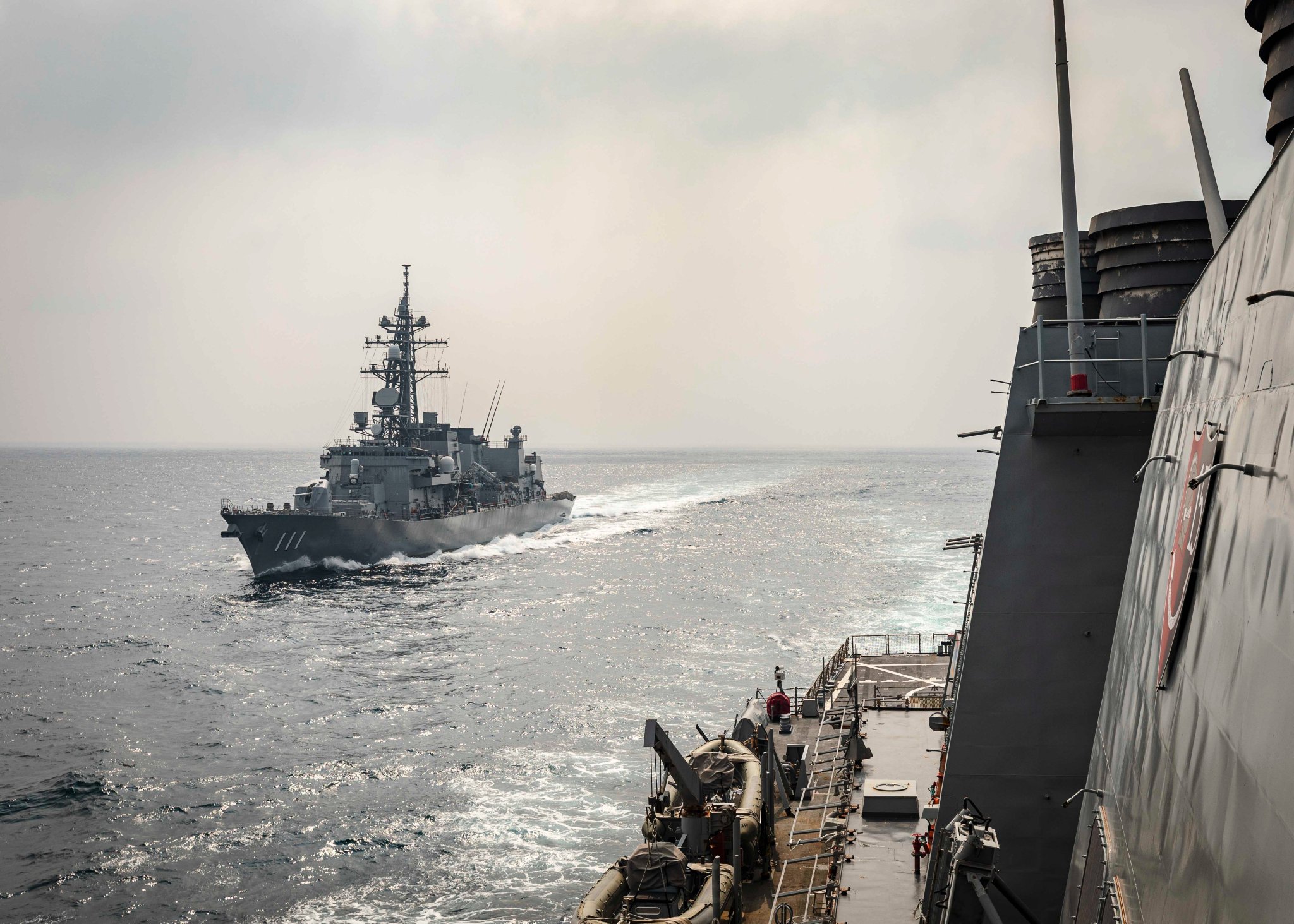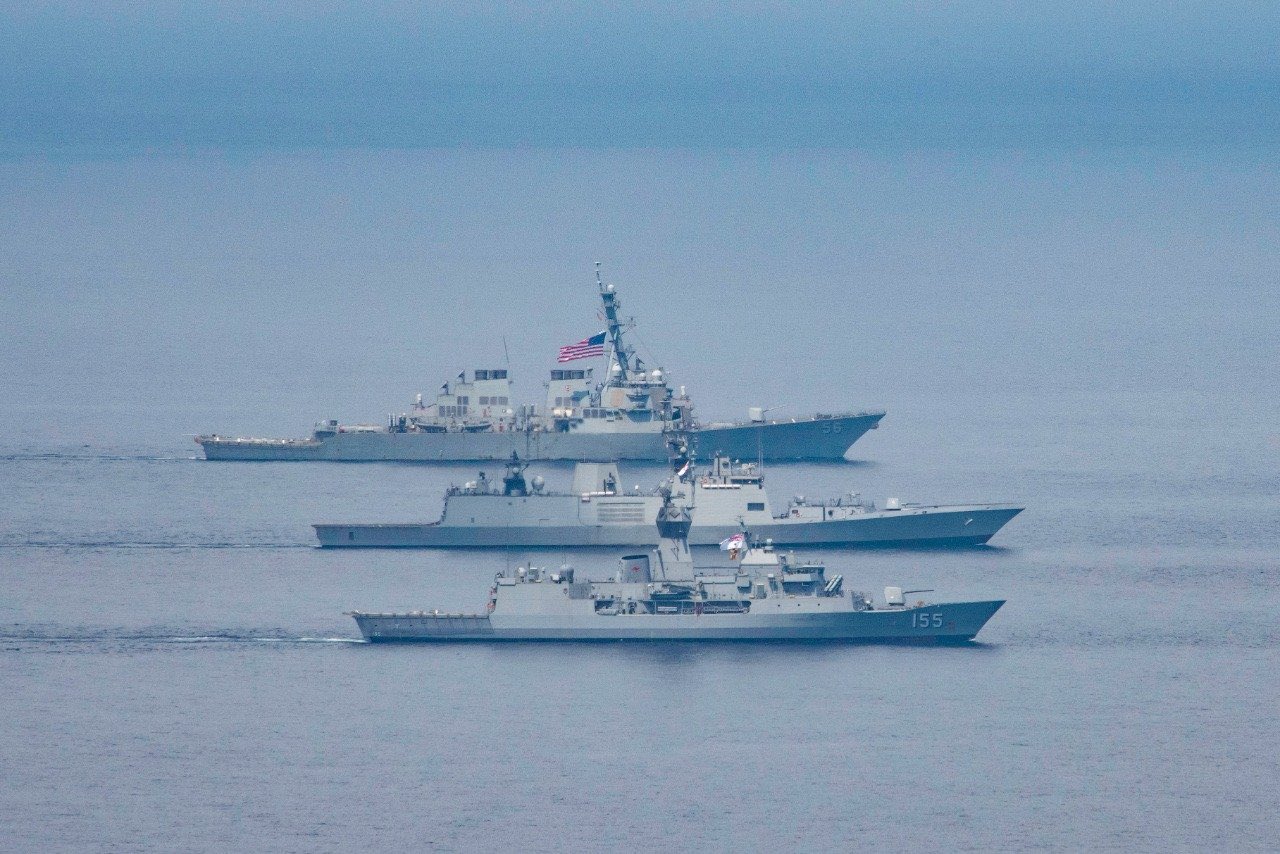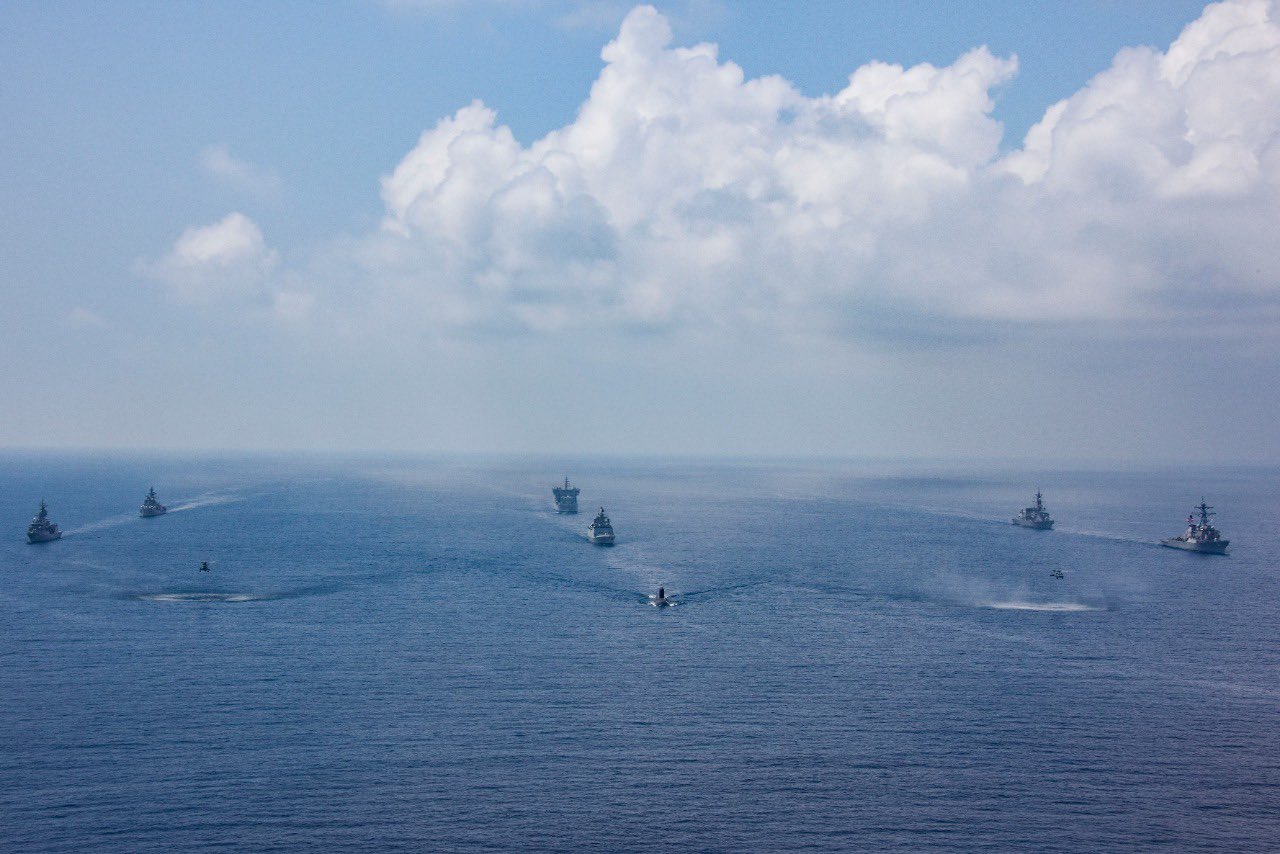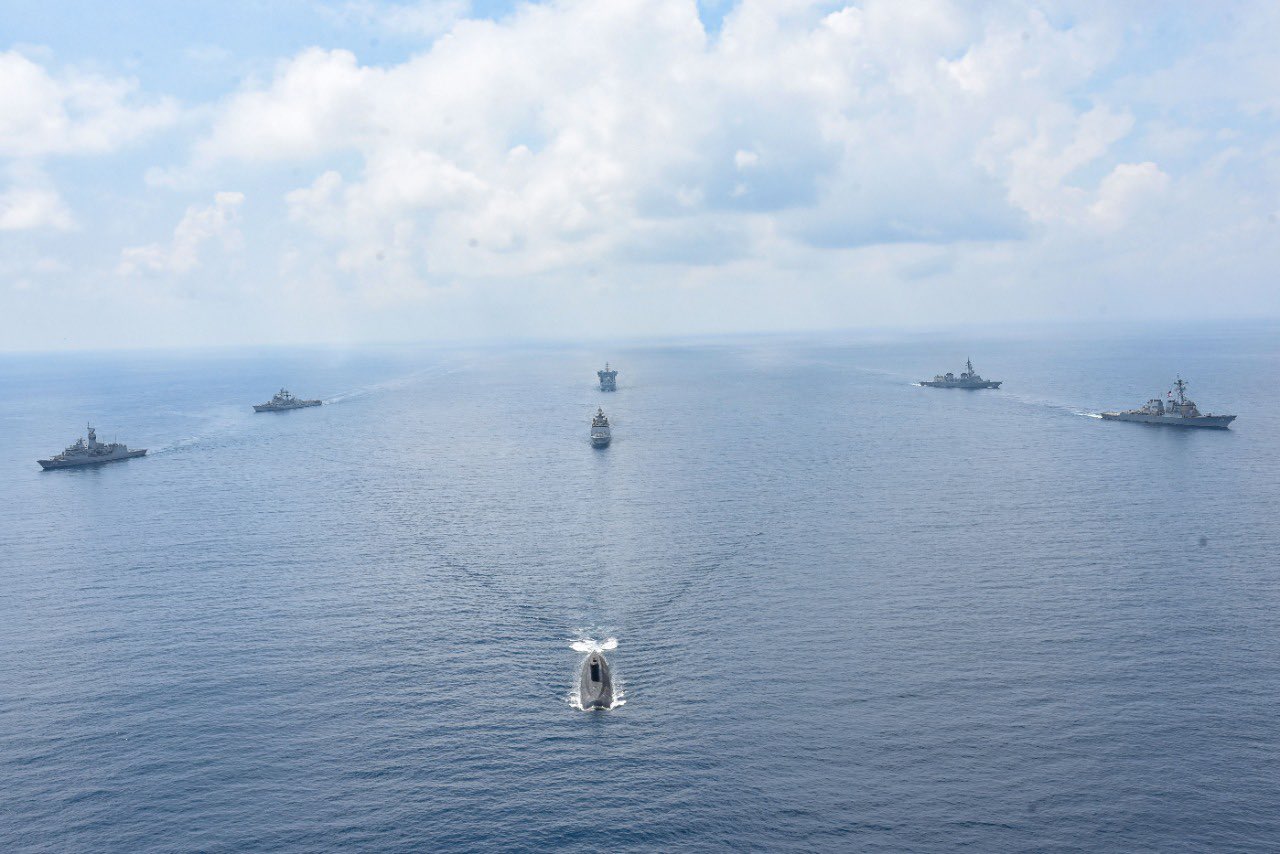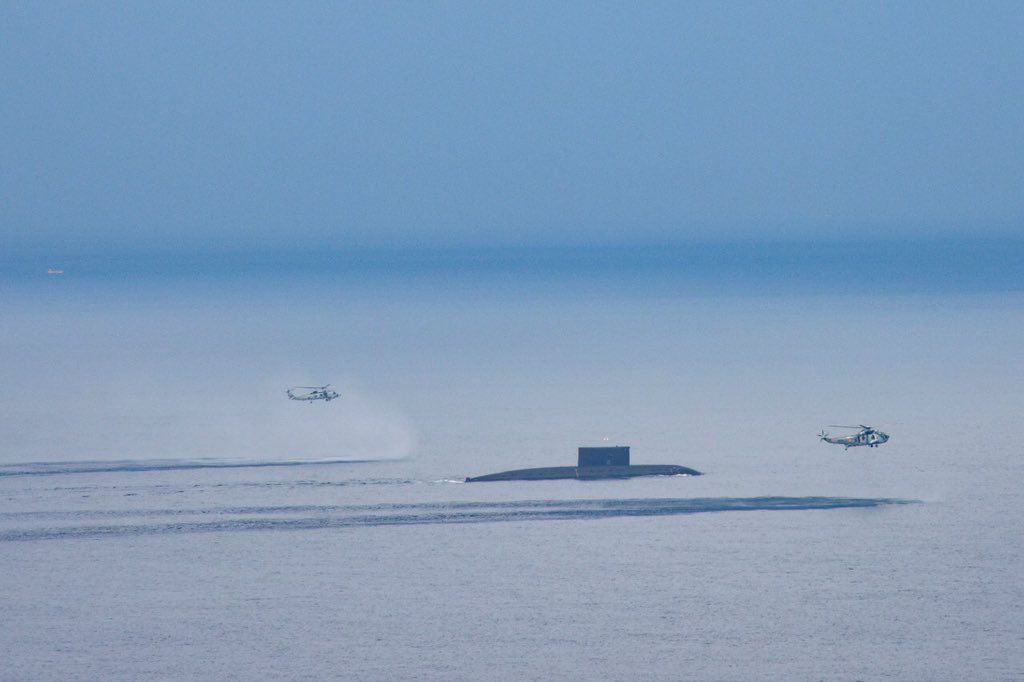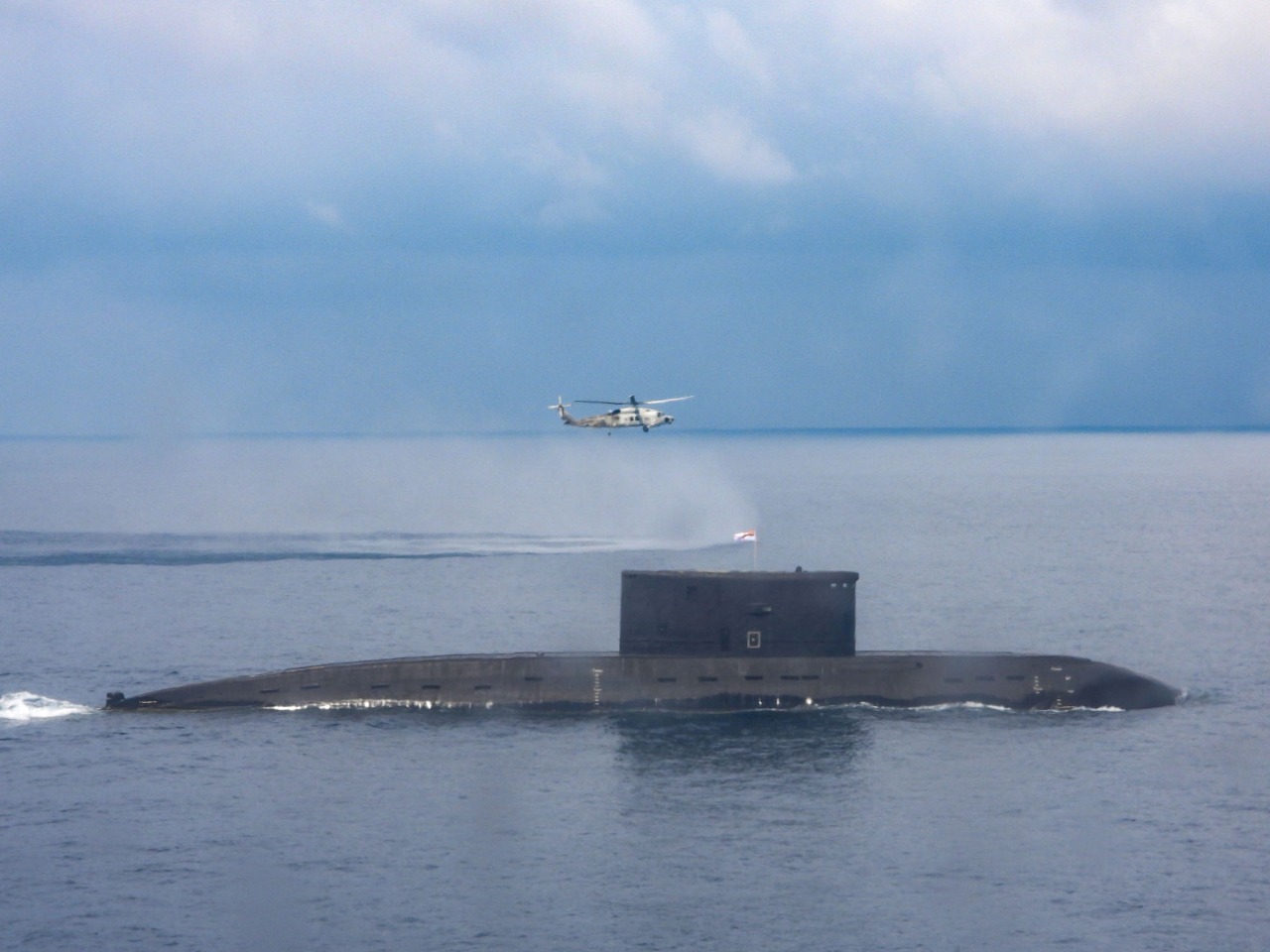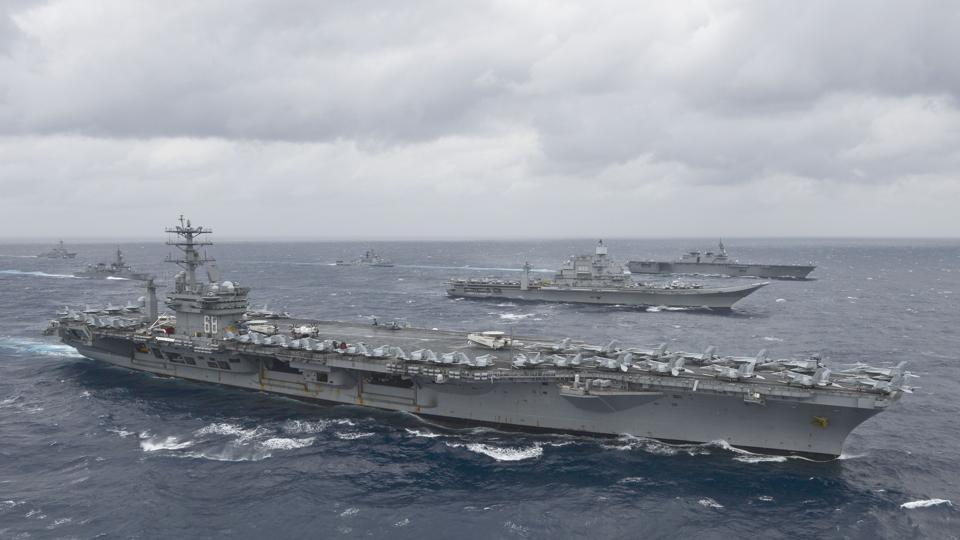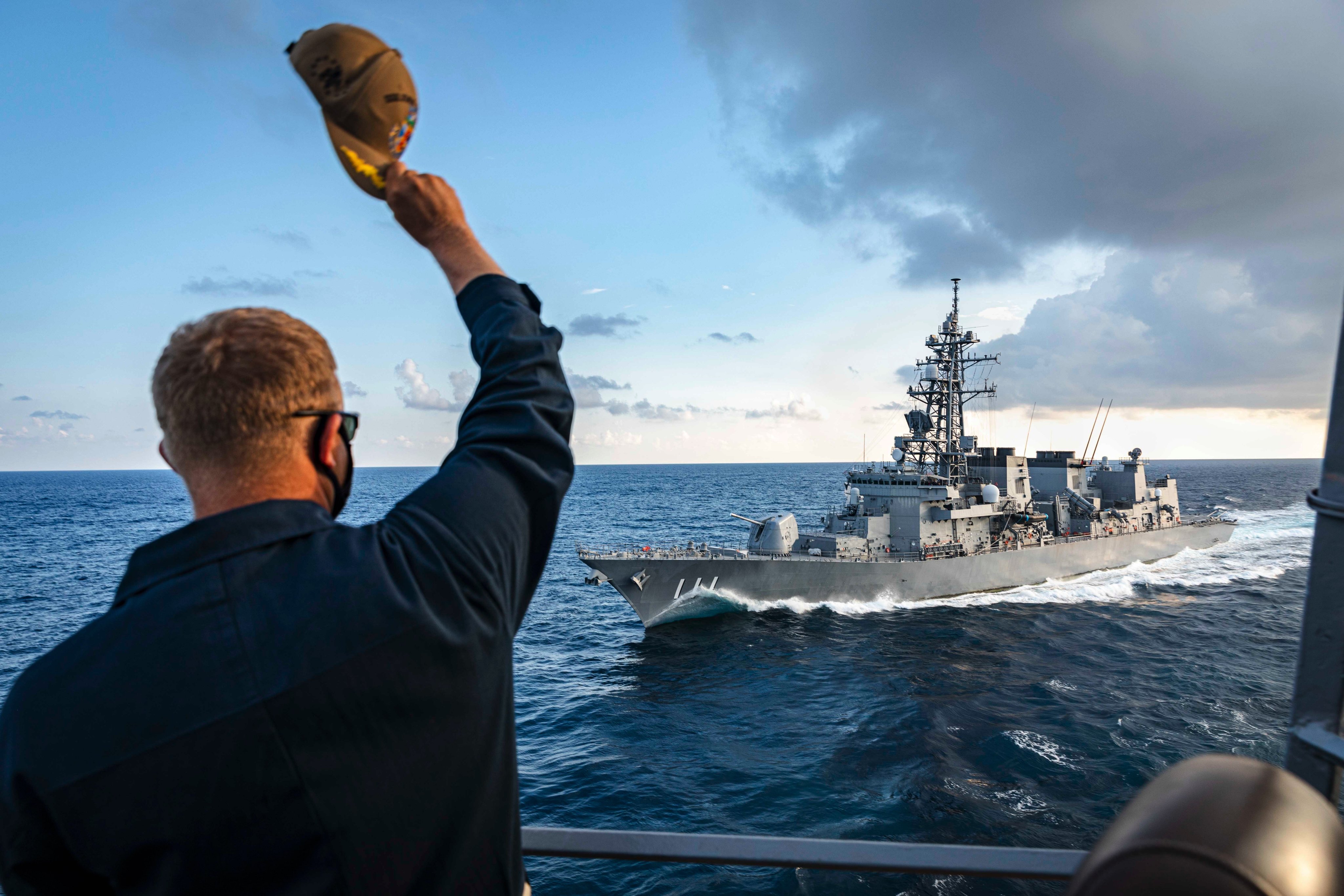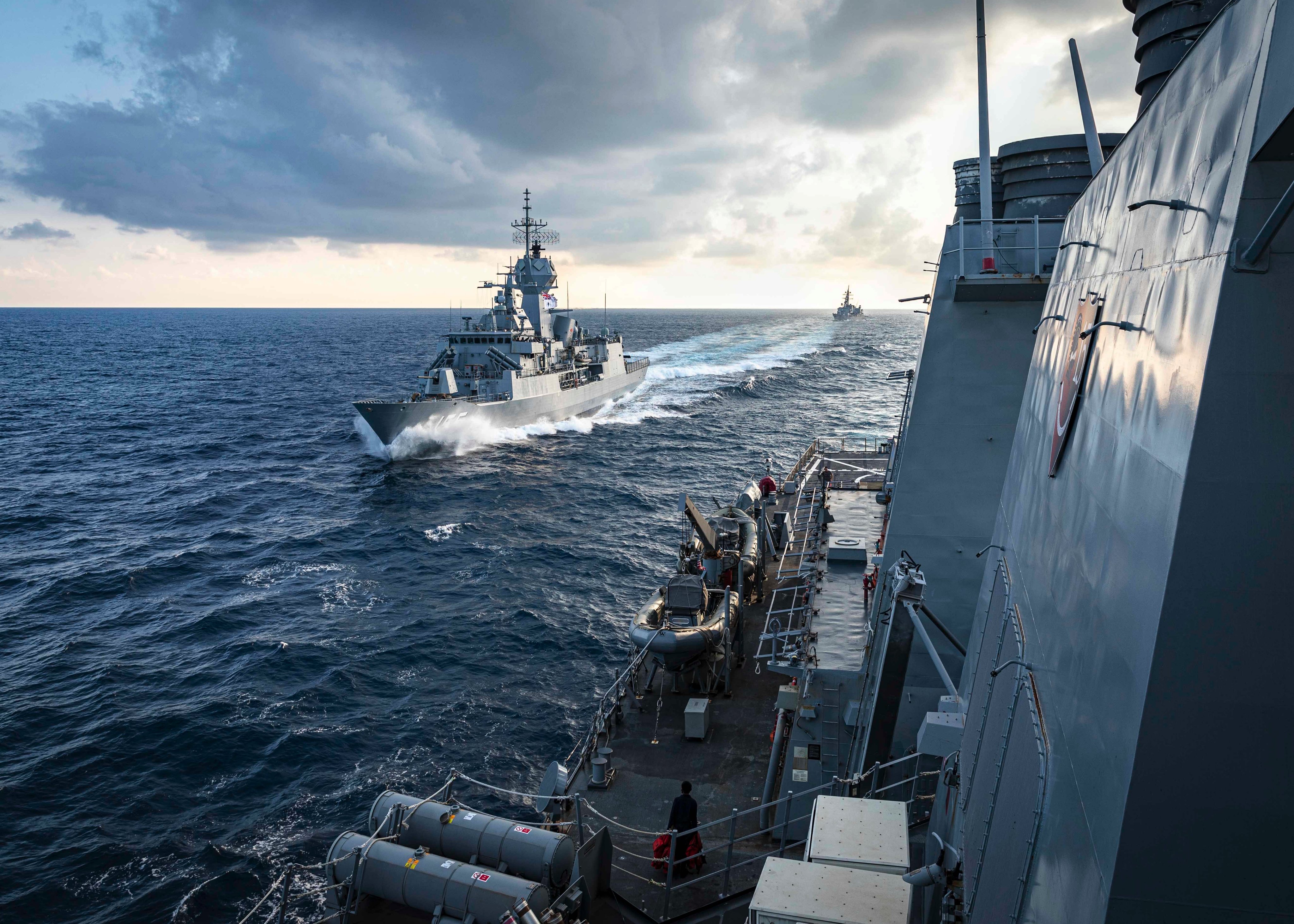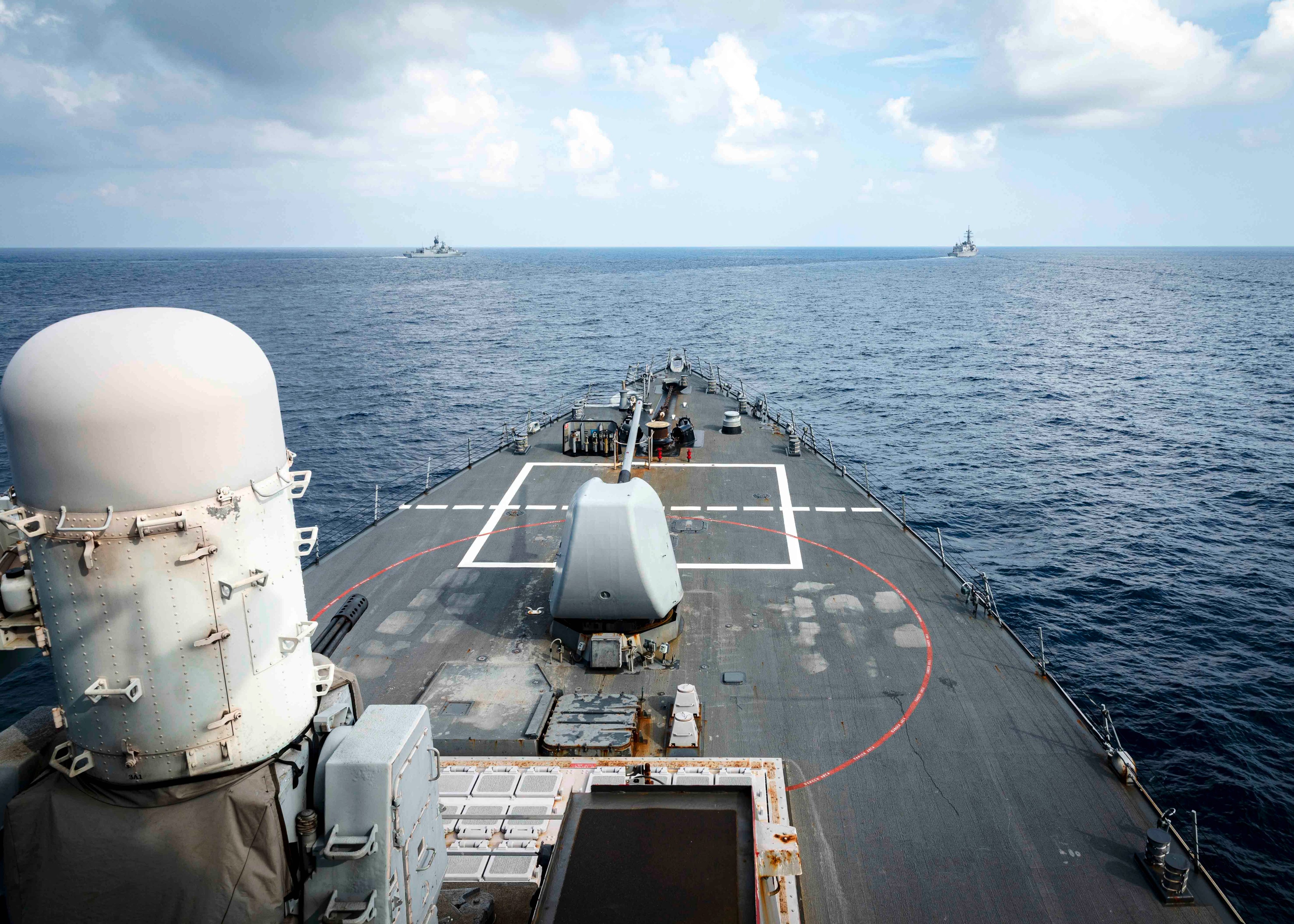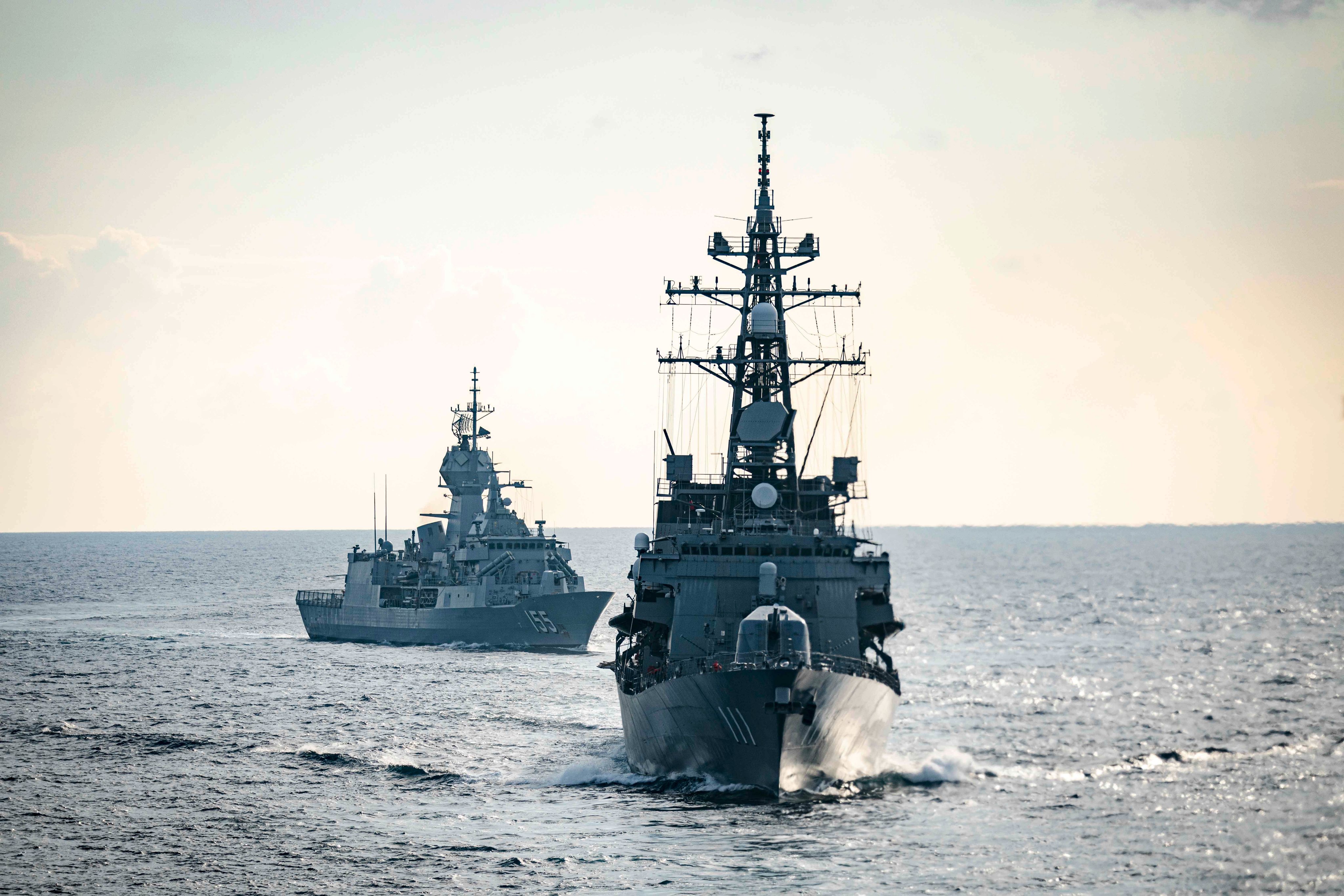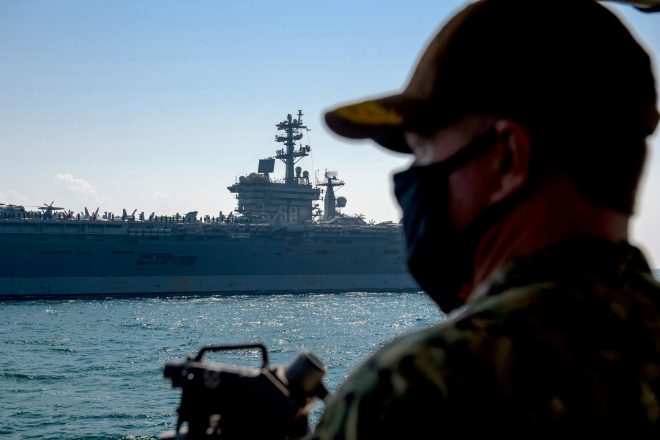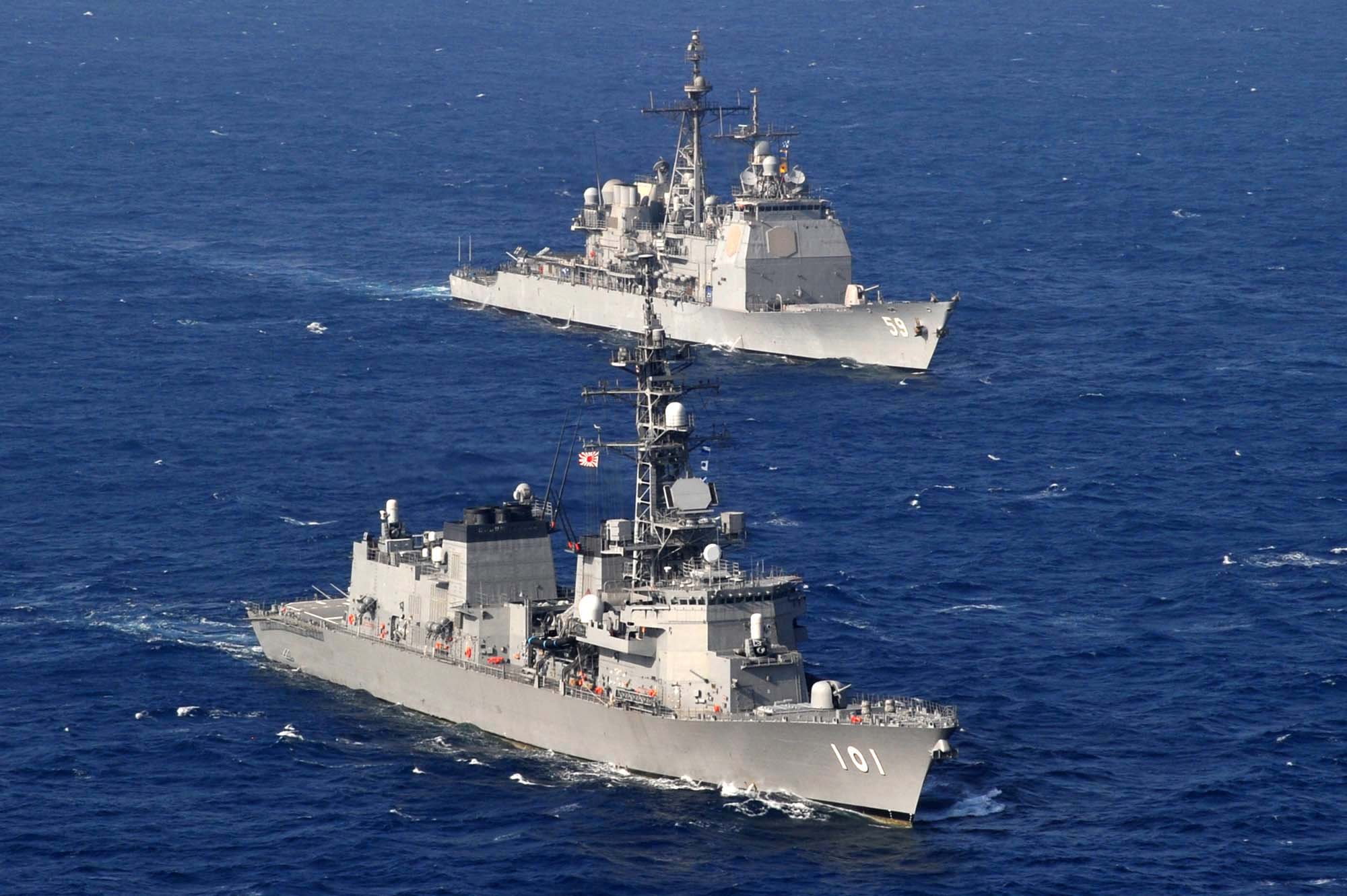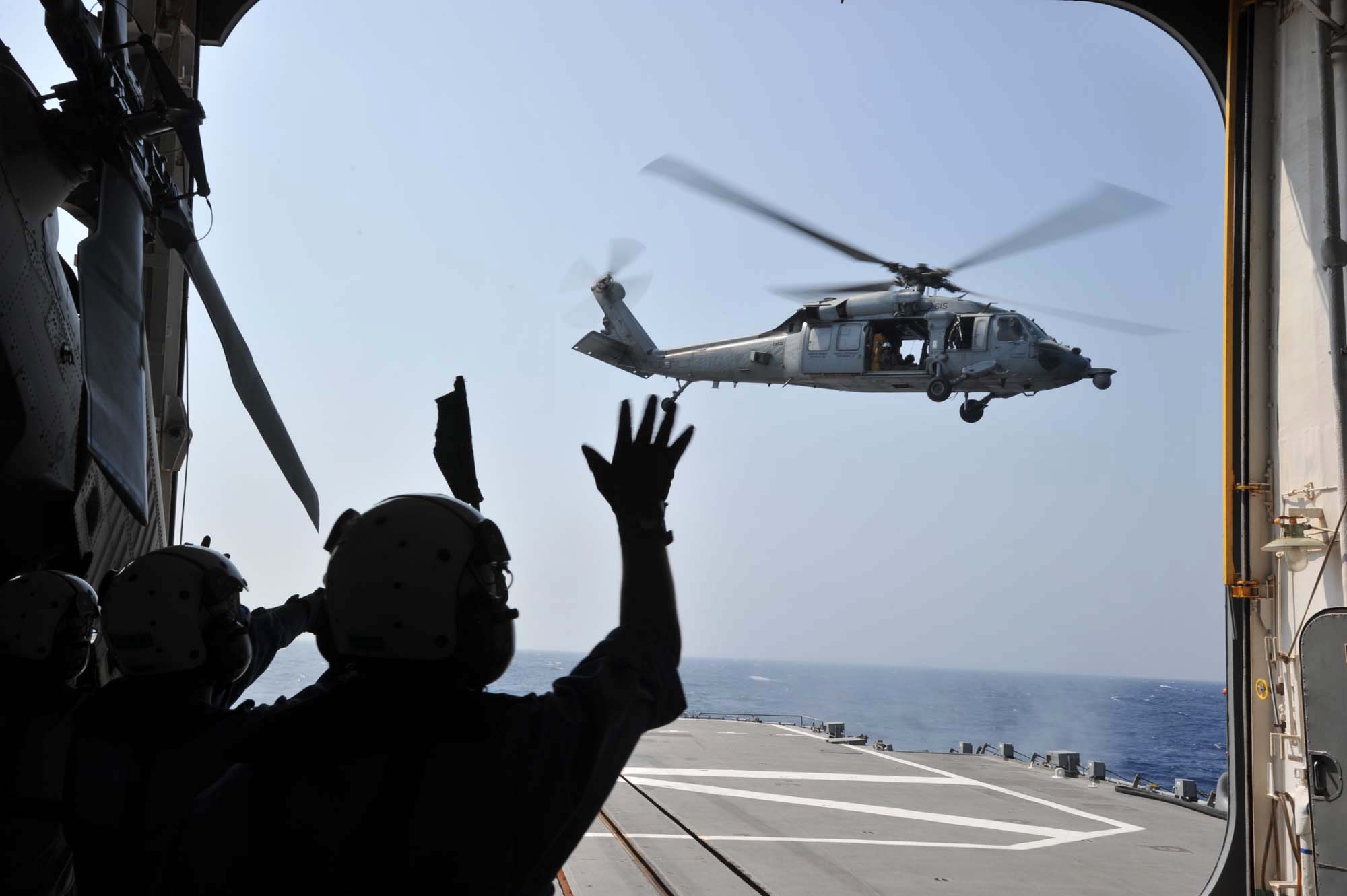A sailor sends off an MH-60R Sea Hawk helicopter from the Royal Australian Navy frigate HMAS Ballarat as it takes off from the flight deck aboard the guided-missile destroyer USS John S. McCain. | U.S. NAVY
Warships and aircraft from the four “Quad” nations kicked off the annual Malabar joint military exercises in the Bay of Bengal on Tuesday, with Australia rejoining the drills for the first time in 13 years.
The exercise comes less than a month after a highly symbolic Quad meeting in Tokyo of the top diplomats of four of the most powerful democratic countries in the Indo-Pacific region — Japan, Australia, India and the United States. Although few concrete takeaways emerged from those talks, they were widely interpreted as a message to China.
The exercises are not formally linked to the Quad forum, but observers say the participants hope to turn drills into a counterweight to Beijing’s increasingly potent military and political influence in the region.
The first phase of the exercises run through Friday, while a second phase will be held later this month.
This year’s exercises, the 24th iteration of the drills, include “a variety of high-end tactical training, including specific interactions that are designed to enhance interoperability between the Royal Australian Navy, Indian Navy, Japan Maritime Self Defense Force (JMSDF) and U.S. maritime forces,” the U.S. Navy’s 7th fleet said in a statement.
“Malabar provides an opportunity for like-minded navies, sharing a common vision of a more stable, open, and prosperous Indo-Pacific, to operate and train alongside one another,” said Cmdr. Ryan T. Easterday, commanding officer of the USS John S. McCain destroyer.
Easterday also delivered what appeared to be a thinly veiled allusion to China, saying that cooperation was key to stability in the Indo-Pacific.
“A collaborative approach toward regional security and stability is important now more than ever, to deter all who challenge a free and open Indo-Pacific.”
Concerns over Chinese behavior among the four nations have skyrocketed in recent years. From its bloody border dispute with India and its maritime assertiveness with Japan, to its diplomatic and economic tussles with Australia and its fledgling superpower rivalry with the U.S., all four have, at least on some level, voiced frustration and anger with Beijing.
The Malabar exercises provide a highly visible chance for the countries to push back against China. Beijing has been critical of both the Quad and the Malabar exercises, alleging that they are part of an attempt to forge a military alliance designed to rein in China.
Experts have said that given the four Quad countries’ economies, military capabilities and geographic locations, the Malabar exercise represents another step toward a nightmare scenario for Chinese military planners by creating a de facto alliance.
Malabar was launched by India and the U.S. in 1992 and added Japan as a permanent partner in 2015. After more than a decade of absence, India invited Australia to participate this year “to increase cooperation with other countries in the maritime security domain and in light of increased defense cooperation with Australia,” the Indian Defense Ministry said in a statement earlier this month.
Australian Defense Minister Linda Reynolds on Tuesday highlighted the exercise as a symbol of improved ties between the Australian and Indian militaries.
“India and Australia are natural partners in the Indo-Pacific, and Exercise MALABAR is a clear demonstration of the depth of trust and cooperation between our defence organizations,” she said in a statement.
It is unclear if the Malabar exercises will ultimately be formalized within the loose architecture of the Quad, but experts say this year’s drills are a step in that direction.
“An expanded Malabar points to the emergence of a structured maritime coalition in the Indo-Pacific, amounting to an emergent defense maritime architecture vis-a-vis a revisionist China,” analyst Jagannath Panda wrote earlier this year on the website of the Asia Maritime Transparency Initiative at the Center for Strategic Studies think tank.

Malabar military exercises with 'Quad' nations begin in message to China
It is unclear if the exercises will ultimately be formalized within the loose architecture of the Quad, but experts say this year’s drills are a step in that direction.




